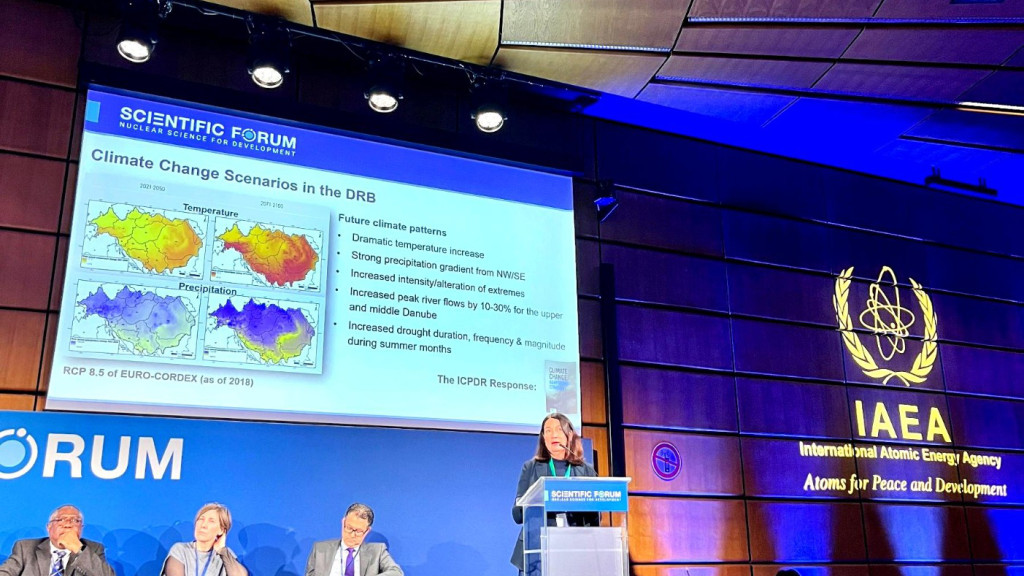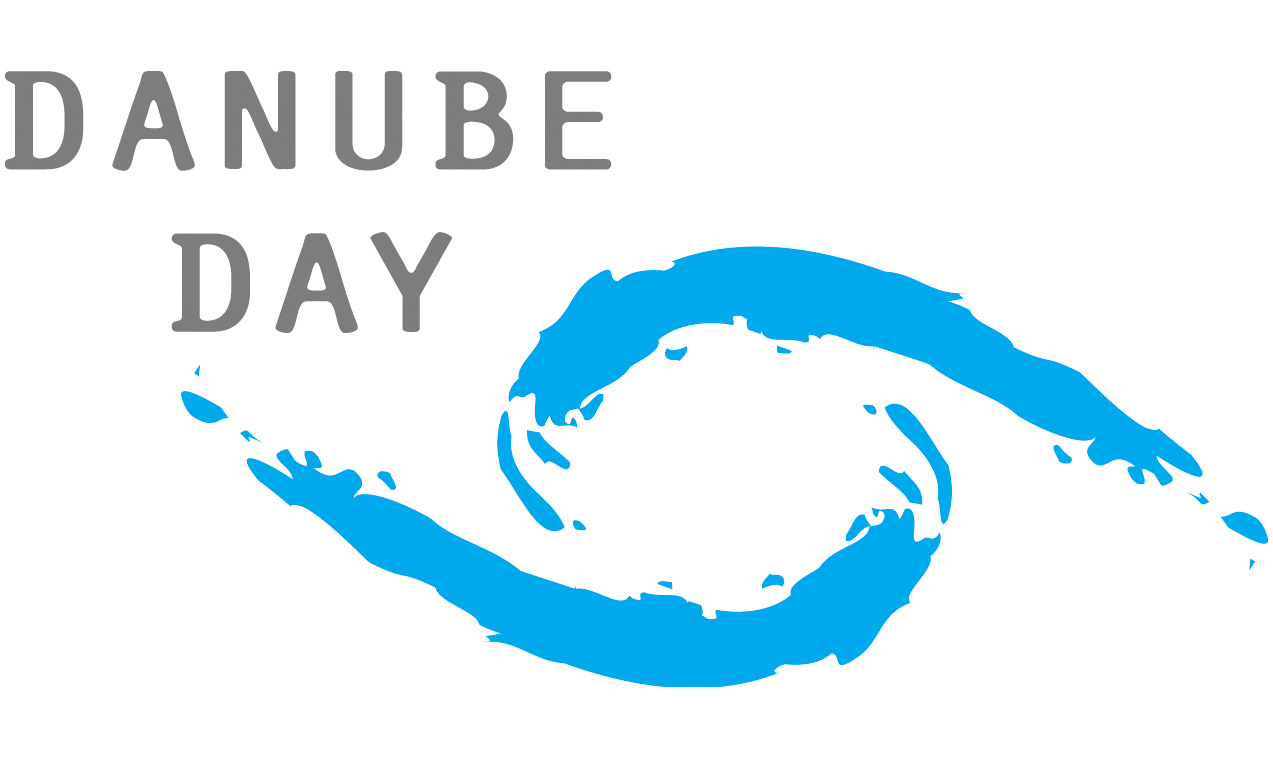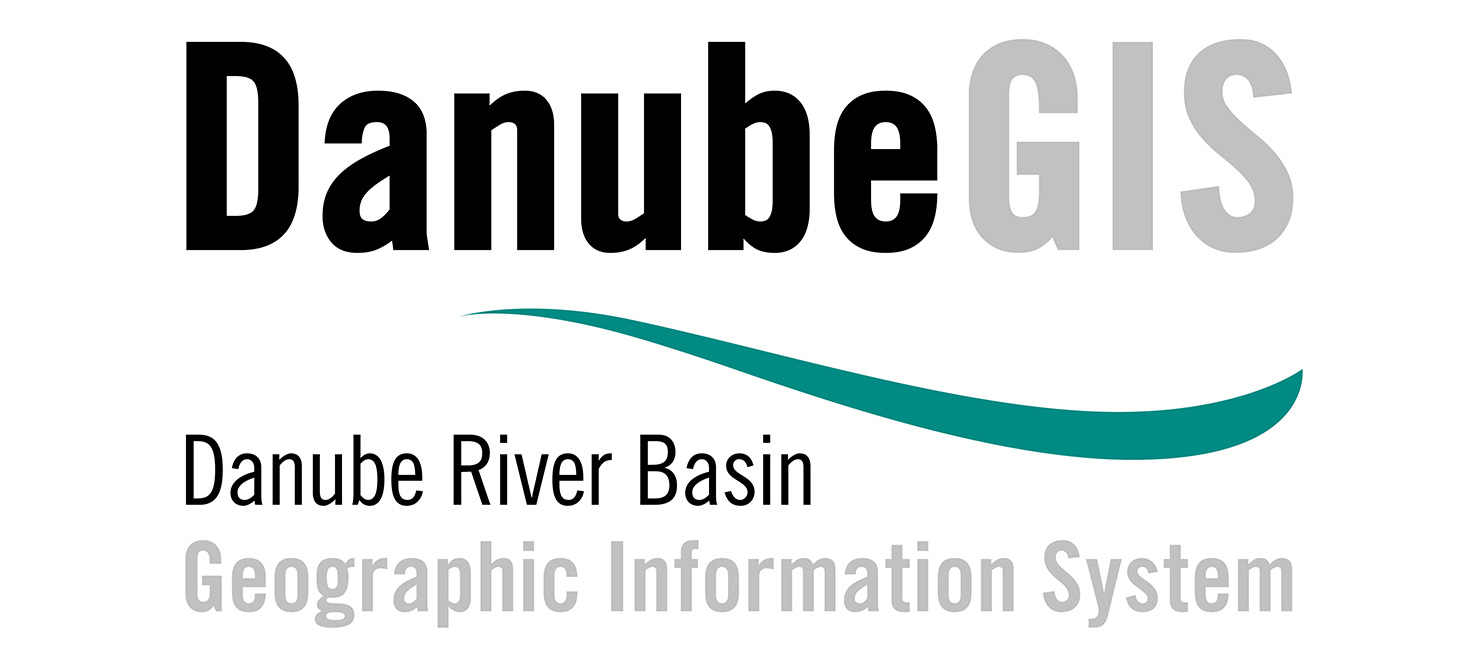Atoms for Water Week: ICPDR Highlights Transboundary Climate Solutions at IAEA Scientific Forum

This week, the International Atomic Energy Agency (IAEA) hosts its 69th General Conference, with this year’s Scientific Forum themed Atoms for Water. The event, running from 16–17 September 2025, brings together global experts to explore how nuclear and isotopic techniques can address water scarcity, climate resilience, and sustainable management.
Birgit Vogel, ICPDR Executive Secretary, participated in Session 3: Climate and Hydrological Variability, a session dedicated to exploring how climate variability intensifies pressure on global water systems, exacerbating extreme weather events. The session also underscored the critical role of the IAEA’s data networks in assessing these changes and guiding sustainable water management.
Central to these discussions was the ICPDR’s contribution, as Birgit Vogel presented on climate change and related extreme events, in particular, droughts. She shared insights from the Overview Report on Droughts and Low Water Levels in the Danube River Basin (DRB). Developed in collaboration with the Global Water Partnership Central-Eastern Europe (GWP CEE) and the Drought Management Centre for Southeast Europe (DMC SEE), the report assesses existing policies, tools, and measures across the DRB and beyond. It proposes 10 actionable suggestions for transboundary drought management, from which ICPDR contracting parties have identified three key priorities:
- Defining common drought indicators (including low water levels and environmental flows), building on national approaches, and starting with simple, scalable tools.
- Developing a harmonized basin-wide monitoring system, linked to drought indicators, to stimulate cross-border coordination and data-sharing.
- Strengthening capacity development through continuous knowledge-sharing, engaging stakeholders not only from the water sector but also agriculture, navigation, and nature protection.
These priorities were central to today’s session, “Climate and Hydrological Variability”, which examined how climate change intensifies pressure on global water systems, from extreme weather events to shifting precipitation patterns. The session will also highlight the IAEA’s data networks and their role in assessing these changes, guiding policies, and optimizing water resource management.
As Ms Vogel noted, “Droughts know no borders. They demand action and cooperation across countries and sectors.”
Next Steps: Implementation discussions are ongoing, with a focus on translating priorities into action. The ICPDR invites stakeholders to engage in this process and follow updates via the ICPDR Climate Change Adaptation page.
Watch the livestream of the Atoms for Water Scientific Forum here.





